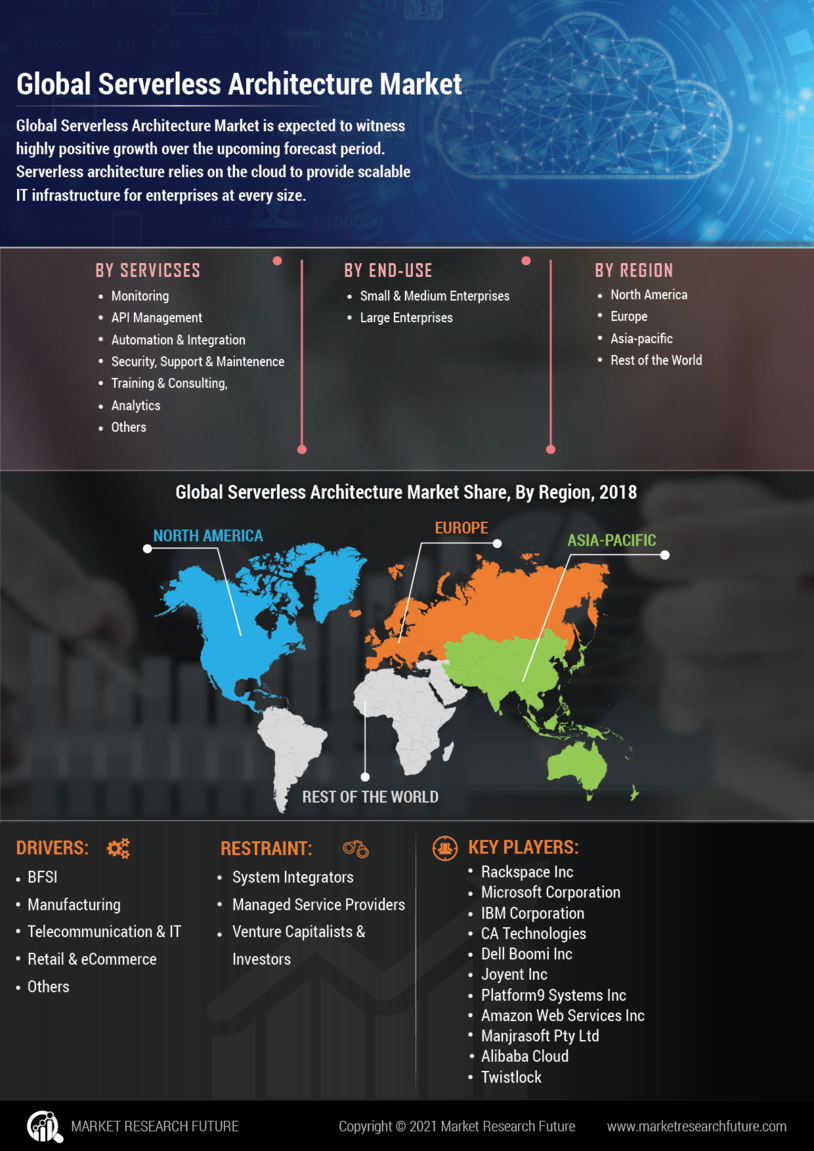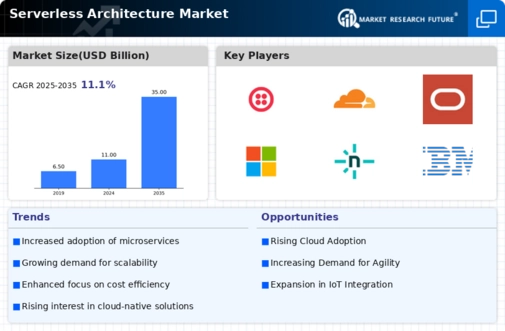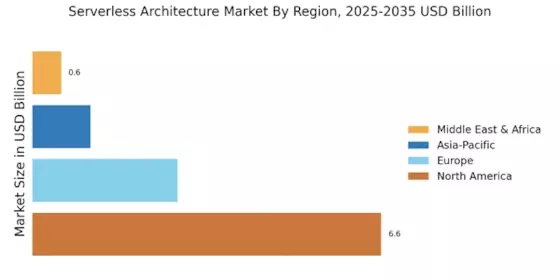Scalability and Flexibility
Scalability and flexibility are pivotal drivers in the Serverless Architecture Market. The inherent design of serverless computing allows applications to automatically scale in response to varying workloads. This capability is particularly advantageous for businesses experiencing fluctuating demand, as it ensures optimal performance without the need for manual intervention. Recent statistics indicate that organizations utilizing serverless solutions can handle up to 10 times more concurrent users compared to traditional architectures. This scalability not only enhances user experience but also reduces the risk of downtime during peak traffic periods. Additionally, the flexibility offered by serverless architectures enables organizations to experiment with different technologies and frameworks without being constrained by infrastructure limitations. As the need for adaptable solutions grows, the serverless architecture market is poised for continued expansion.
Integration with Emerging Technologies
The integration of emerging technologies is a significant driver within the Serverless Architecture Market. As businesses increasingly adopt artificial intelligence, machine learning, and Internet of Things (IoT) solutions, the need for a flexible and scalable backend becomes paramount. Serverless architectures provide an ideal environment for these technologies, allowing for seamless integration and real-time data processing. For instance, serverless functions can be triggered by events from IoT devices, enabling organizations to respond to data inputs instantaneously. This capability is crucial for applications requiring real-time analytics and decision-making. Furthermore, the compatibility of serverless solutions with various programming languages and frameworks enhances their appeal to developers. As the demand for innovative applications rises, the serverless architecture market is likely to benefit from this trend towards integration with cutting-edge technologies.
Rapid Development and Deployment Cycles
In the Serverless Architecture Market, the emphasis on rapid development and deployment cycles is becoming increasingly evident. Organizations are leveraging serverless frameworks to accelerate their application development processes. By abstracting the underlying infrastructure, developers can focus on writing code and deploying applications without the overhead of server management. This agility is particularly beneficial in competitive markets where time-to-market is critical. Data suggests that companies adopting serverless architecture can reduce deployment times by as much as 50%. This rapid iteration capability not only enhances productivity but also fosters innovation, as teams can experiment and implement new features more swiftly. Consequently, the demand for serverless solutions is likely to grow as businesses seek to enhance their development workflows and maintain a competitive edge.
Cost Efficiency and Resource Optimization
The Serverless Architecture Market is witnessing a pronounced shift towards cost efficiency and resource optimization. Organizations are increasingly adopting serverless computing to minimize infrastructure costs, as they only pay for the compute time consumed. This model eliminates the need for provisioning and managing servers, which can lead to substantial savings. According to recent data, companies utilizing serverless architecture have reported up to 30% reduction in operational costs. This financial incentive is compelling, particularly for startups and small businesses that may lack extensive IT budgets. Furthermore, the ability to scale resources dynamically based on demand allows organizations to optimize their resource utilization, thereby enhancing overall operational efficiency. As more enterprises recognize these benefits, the serverless architecture market is likely to expand, driven by the pursuit of cost-effective solutions.
Focus on Enhanced Security and Compliance
Enhanced security and compliance measures are increasingly influencing the Serverless Architecture Market. As organizations migrate to serverless environments, they are prioritizing security protocols to protect sensitive data and ensure compliance with regulatory standards. Serverless architectures often come with built-in security features, such as automatic updates and patch management, which can mitigate vulnerabilities. Moreover, the shared responsibility model in serverless computing allows organizations to focus on securing their applications while the service provider manages the underlying infrastructure. Recent data indicates that companies adopting serverless solutions experience a 40% decrease in security incidents compared to traditional setups. This focus on security not only fosters trust among users but also encourages more organizations to explore serverless options, thereby driving market growth.


















Leave a Comment